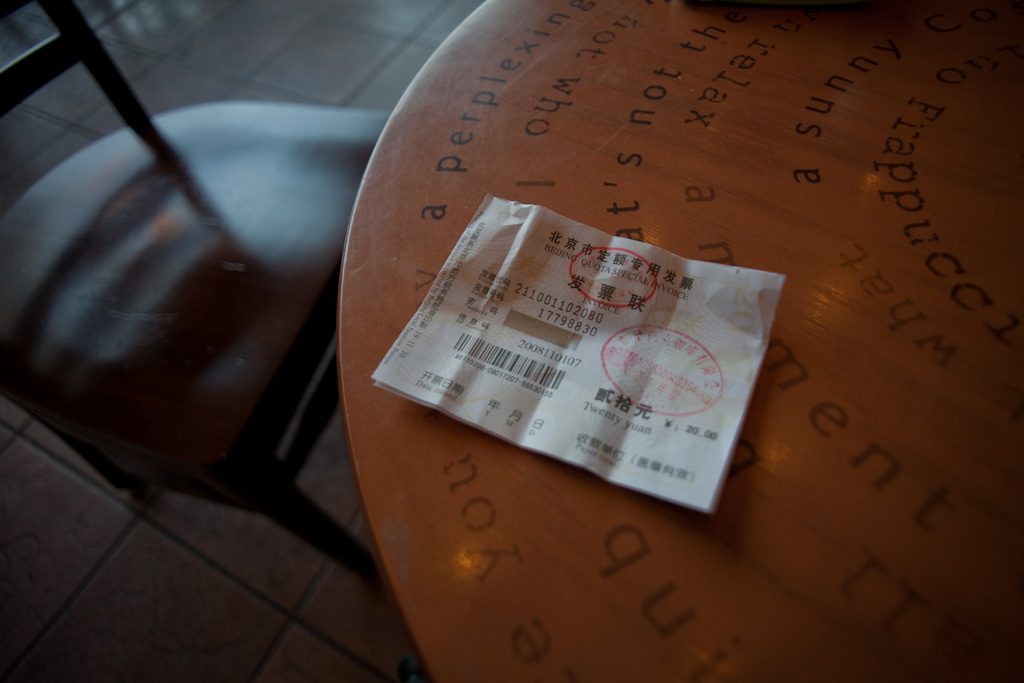In China a fapiao– the official receipt used for expense claims has a resale face value of 2 – 10% of face value – leaving one behind in a restaurant or taxi is the equivalent of giving a tip (in a culture where tipping is uncommon) and not requesting one allows the person or establishment to avoid ringing the exchange through a cash register. There are two primary practices around handing out fapiao: the first is that they are printed to the exact value; the second is that the seller takes an equivalent sum from book of fapiao that contains various denominations.
In many smaller establishments the seller is reluctant to hand over fapiao since in essence it becomes declared income and it is common to have to ask twice, especially as a foreigner. But in larger service industry chains where (some) tax is a given and employees feel less loyalty to the bottom line over-paying on fapiao (handing back receipts way in excess of the actual sums purchased) is like handing money back to the customer. The social norms dictate that the seller should round up – so if the the lowest denominations are 20 RMB (about 2.5 Euro) a customer could get 40 RMB of fapiao for a 25 RMB drink.
Thoughts for today: the situations where the buyer or seller will shift a measurable value (cash, money) into other less comparable forms (fapiao, …) to disguise the real value of the exchange. Who they are disguising it from. The legal and social rules surrounding the exchange. Aftermarkets for the receipts.
Photo: overpaid fapiao in a Beijing Starbucks, meeting with Jeremy Goldkorn.

3 Trackbacks
[…] Future Perfect » The Reverse Tip"Thoughts for today: the situations where the buyer or seller will shift a measurable value (cash, money) into other less comparable forms (fapioa, …) to disguise the real value of the exchange. Who they are disguising it from. The legal and social rules surrounding the exchange. Aftermarkets for the receipts."(tags:money culture social ) […]
[…] is the link, and for the pointer I thank Fred […]
[…] adequate denominations” and “second hand markets in everything”. Rest (not much) here. Like this:LikeBe the first to like this […]